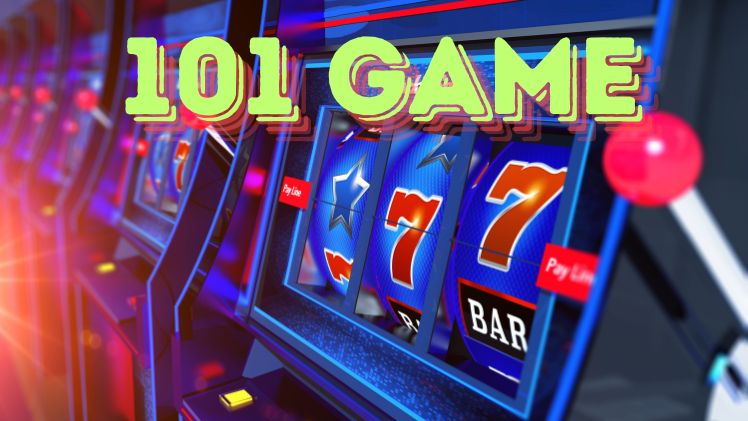
The 101 Game is a classic card game that combines strategy, skill, and a touch of luck. Its simplicity makes it accessible to beginners, while its strategic depth offers a challenge for experienced players. Understanding the rules thoroughly is the first step toward playing confidently and enjoying the game to its fullest. This guide provides a complete overview of the 101 Game rules, setup, scoring, gameplay, and tips to help you get started.
Overview of the 101 Game
The objective of the 101 Game is to be the first player to reach 101 points by forming valid card combinations. These combinations typically include sequences (consecutive cards of the same suit) and sets (cards of the same rank). The game is played with a standard 52-card deck, sometimes including jokers as wild cards in certain variations.
The game is well-balanced, offering both luck and strategy. While the cards you draw are random, how you manage them, form combinations, and plan moves determines your success.
Game Setup
Proper setup ensures smooth gameplay:
- Deck Preparation: Use a standard 52-card deck. Jokers may be included as wild cards depending on your variation.
- Shuffling: Shuffle the deck thoroughly to ensure random distribution.
- Dealing Cards: Each player receives a hand, typically 7 to 10 cards depending on the number of players.
- Starting the Discard Pile: Place the remaining deck face down as the draw pile. Draw one card from the top and place it face up to start the discard pile.
Once the setup is complete, the first player is ready to draw, play, and discard cards.
Basic Gameplay
Gameplay in the 101 Game is turn-based and revolves around drawing, forming combinations, and discarding:
- Player Turns: Players take turns clockwise. On your turn, you can draw either from the draw pile or the discard pile.
- Forming Combinations: The goal is to create valid combinations:
- Sequences: Consecutive cards of the same suit, such as 4♠, 5♠, 6♠.
- Sets: Cards of the same rank, such as 7♣, 7♦, 7♥.
- Sequences: Consecutive cards of the same suit, such as 4♠, 5♠, 6♠.
- Discarding: At the end of each turn, you must discard one card, placing it on the discard pile. Discards are critical, as they can either help or hinder your opponents.
The strategic choice of which card to draw and which to discard is key to gaining points while preventing opponents from completing their combinations.
Scoring System
Scoring is fundamental to 101 Game. While variations exist, the standard scoring is typically as follows:
- Number Cards (2–10): Worth face value in points.
- Face Cards (Jack, Queen, King): Usually 10 points each.
- Ace: Worth either 1 or 11 points depending on the variation.
- Combinations: Completing sequences and sets adds points to your total.
- Bonus Points: Some variations award extra points for long sequences, special sets, or using all cards in your hand.
Keeping track of your points throughout the game is crucial for planning your strategy and determining whether to play aggressively or defensively.
Winning the Game
The primary goal is to reach 101 points first. Depending on the rules of the variation:
- Exact Target: Some versions require players to hit exactly 101 points to win.
- Exceeding 101: Going over may result in penalties or nullifying the round.
- End-of-Round Victory: If no one reaches 101 in a round, the game continues until a player achieves the target score.
Winning requires not only completing sequences and sets efficiently but also anticipating opponents’ moves and making tactical discards.
Tips for Beginners
Here are practical tips for new players looking to improve quickly:
- Learn Combinations Thoroughly: Understand what constitutes sequences, sets, and bonus combinations.
- Observe Opponents: Pay attention to which cards they discard or hold back to anticipate their strategy.
- Plan Ahead: Think two to three turns in advance rather than reacting only to your current draw.
- Track Points: Always be aware of your score and your opponents’ scores to adjust your strategy accordingly.
- Discard Carefully: Avoid discarding cards that could help opponents complete high-value combinations.
Following these tips can give beginners a strong foundation and increase their chances of winning.
Common Variations
The 101 Game has several variations depending on regional rules:
- Joker Inclusion: Some versions include jokers as wild cards, allowing them to substitute for any card in sequences or sets.
- Variable Hand Sizes: Depending on the number of players, each player might be dealt more or fewer cards.
- Alternative Point Goals: While 101 points is standard, some games adjust the target for shorter or longer gameplay.
- Penalty Rules: Certain versions impose penalties for mistakes like incorrect sequences or exceeding the target score.
Understanding the rules of your specific variation is essential for developing an effective strategy.
Common Mistakes to Avoid
Even experienced players can make errors. Avoid these common pitfalls:
- Ignoring Opponents’ Moves: Focusing only on your own hand can cause missed opportunities.
- Holding Useless Cards: Retaining low-value cards that don’t contribute to sequences or sets reduces flexibility.
- Miscalculating Points: Mistakes in scoring can lead to confusion or unfair advantages.
- Careless Discards: Giving away critical cards can drastically change the game’s outcome.
- Reactive Play: Failing to plan ahead leads to missed opportunities and inefficient turns.
Being mindful of these mistakes can improve accuracy and overall performance.
Conclusion
The 101 Game is an engaging and strategic card game that blends luck and skill. Understanding the rules, scoring, and gameplay mechanics is essential for both beginners and experienced players. By learning combinations, observing opponents, planning moves, and managing your hand effectively, you can increase your chances of reaching 101 points first.
Whether playing casually with friends or competitively, the 101 Game offers endless fun and challenges. This quick guide equips you with the knowledge to start playing confidently, track your progress, and develop strategies that will help you master the game over time.



